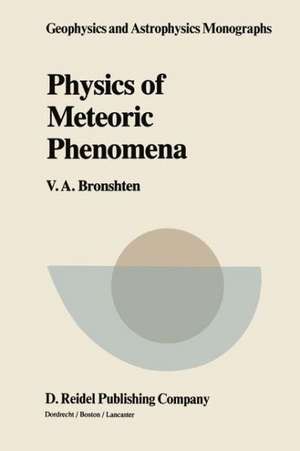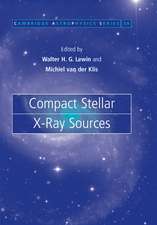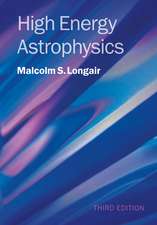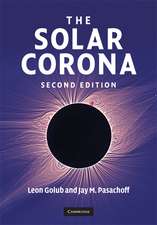Physics of Meteoric Phenomena: Geophysics and Astrophysics Monographs, cartea 22
Autor V.A. Bronshtenen Limba Engleză Hardback – 30 sep 1983
| Toate formatele și edițiile | Preț | Express |
|---|---|---|
| Paperback (1) | 2049.68 lei 6-8 săpt. | |
| SPRINGER NETHERLANDS – 12 oct 2011 | 2049.68 lei 6-8 săpt. | |
| Hardback (1) | 2055.57 lei 6-8 săpt. | |
| SPRINGER NETHERLANDS – 30 sep 1983 | 2055.57 lei 6-8 săpt. |
Din seria Geophysics and Astrophysics Monographs
- 15%
 Preț: 633.36 lei
Preț: 633.36 lei - 24%
 Preț: 1032.00 lei
Preț: 1032.00 lei -
 Preț: 375.06 lei
Preț: 375.06 lei - 18%
 Preț: 931.09 lei
Preț: 931.09 lei - 15%
 Preț: 629.38 lei
Preț: 629.38 lei - 15%
 Preț: 628.57 lei
Preț: 628.57 lei - 18%
 Preț: 934.02 lei
Preț: 934.02 lei -
 Preț: 395.80 lei
Preț: 395.80 lei - 15%
 Preț: 628.74 lei
Preț: 628.74 lei -
 Preț: 394.10 lei
Preț: 394.10 lei - 15%
 Preț: 628.89 lei
Preț: 628.89 lei - 18%
 Preț: 1197.20 lei
Preț: 1197.20 lei - 18%
 Preț: 1788.36 lei
Preț: 1788.36 lei - 18%
 Preț: 928.64 lei
Preț: 928.64 lei - 24%
 Preț: 794.96 lei
Preț: 794.96 lei - 18%
 Preț: 1202.63 lei
Preț: 1202.63 lei - 15%
 Preț: 628.07 lei
Preț: 628.07 lei -
 Preț: 376.76 lei
Preț: 376.76 lei - 15%
 Preț: 683.05 lei
Preț: 683.05 lei - 18%
 Preț: 2047.05 lei
Preț: 2047.05 lei - 18%
 Preț: 1207.57 lei
Preț: 1207.57 lei -
 Preț: 382.79 lei
Preț: 382.79 lei - 18%
 Preț: 924.61 lei
Preț: 924.61 lei - 18%
 Preț: 931.40 lei
Preț: 931.40 lei -
 Preț: 378.83 lei
Preț: 378.83 lei -
 Preț: 387.31 lei
Preț: 387.31 lei - 18%
 Preț: 932.62 lei
Preț: 932.62 lei
Preț: 2055.57 lei
Preț vechi: 2506.80 lei
-18% Nou
Puncte Express: 3083
Preț estimativ în valută:
393.52€ • 409.04$ • 326.27£
393.52€ • 409.04$ • 326.27£
Carte tipărită la comandă
Livrare economică 06-20 februarie 25
Preluare comenzi: 021 569.72.76
Specificații
ISBN-13: 9789027716545
ISBN-10: 9027716544
Pagini: 380
Ilustrații: XVIII, 358 p.
Dimensiuni: 170 x 244 x 26 mm
Greutate: 0.71 kg
Ediția:1983
Editura: SPRINGER NETHERLANDS
Colecția Springer
Seria Geophysics and Astrophysics Monographs
Locul publicării:Dordrecht, Netherlands
ISBN-10: 9027716544
Pagini: 380
Ilustrații: XVIII, 358 p.
Dimensiuni: 170 x 244 x 26 mm
Greutate: 0.71 kg
Ediția:1983
Editura: SPRINGER NETHERLANDS
Colecția Springer
Seria Geophysics and Astrophysics Monographs
Locul publicării:Dordrecht, Netherlands
Public țintă
ResearchCuprins
1. General Information about Meteoric Phenomena.- 2. Historical Review of Research in Meteor Physics.- I. The Simple Physical Theory of Meteors.- 3. Fundamental Equations.- 4. Self-Similarity of the Problem of Motion and Ablation of a Meteoroid.- 5. The Problem of Meteoroid Motion with Variable Coefficients.- 6. Flow Regimes.- 7. Parameters of the Fundamental Equations.- II. The Heating of Meteoroids and the Onset of Vaporization.- 8. The Heating of a Meteoroid in the Upper Section of its Path.- 9. The Transition to Intensive Evaporation.- 10. Shielding Effects. The Regime of First Collisions.- 11. Shielding in the Transition Regime.- 12. The Case of Strong Shielding.- III. Ablation of Meteoroids.- 13. Two Main Mechanisms of Ablation: Vaporization and Spraying or Blowoff of the Molten Layer.- 14. Experimental Studies of Ablation.- 15. Theoretical Studies of the Ablation of Large Bodies.- 16. Large-Meteoroid Vaporization under the Influence of the Radiation Flux.- 17. Formation of an Ablational Shock Wave and the Energetics of Large Meteoroids.- 18. Ablation and Meteorite Morphology.- IV. Luminosities and Spectra of Meteors.- 19. The Nature of Meteor Radiation.- 20. The Luminosity Equation and its Parameters.- 21. Experimental Determinations of the Radiative Efficiency.- 22. The Effect of Meteoroid Flight Condition on the Radiative Efficiency.- 23. The Qualitative Analysis of Meteor Spectra.- 24. The Quantitative Analysis of Meteor Spectra. The Curve-of-Growth Method.- 25. Determination of the Chemical Compositions of Meteoroids from their Spectra. Comparison with Meteorites.- 26. Some Unusual Emissions.- V. Meteoric Ionization.- 27. Formation of the Ion Trail.- 28. Classification of Meteor Ion Trails.- 29. Disintegration of the Ion Trail.- 30. The Head Echo and its Relation to other Phenomena.- VI. Masses and Densities of Meteoroids.- 31. Dynamic Masses.- 32. Photometric Masses.- 33. The Hypothesis of Dustballs and Friable Meteoric Bodies.- 34. Explanation of the “Mass Paradox” as an Effect of Fragmentation.- 35. Determination of the Mineralogical Densities of the Meteoroids.- 36. Determination of the Densities of Large Meteoroids from their Breakup Heights.- VII. Fragmentation of Meteoroids.- 37. Observational Data on Meteoroid Fragmentation.- 38. Effect of Fragmentation on the Photometric Curve.- 39. Meteor Bursts.- 40. Fragmentation of Meteorites.- 41. Physical Aspects of Meteoroid Fragmentation.- Appendixes to the English Editions.- 1. A Quasi-Simple Ablation Model for the Entry of Large Meteoroids into the Atmosphere.- 2. Transfer of the Shock-Wave Radiation to the Body of the Meteoroid.- 3. Electrophonic Phenomena during the Flight of a Bright Bolide.- 4. The Dynamics of Meteoroid Breakup.- References for Appendixes.- References.













